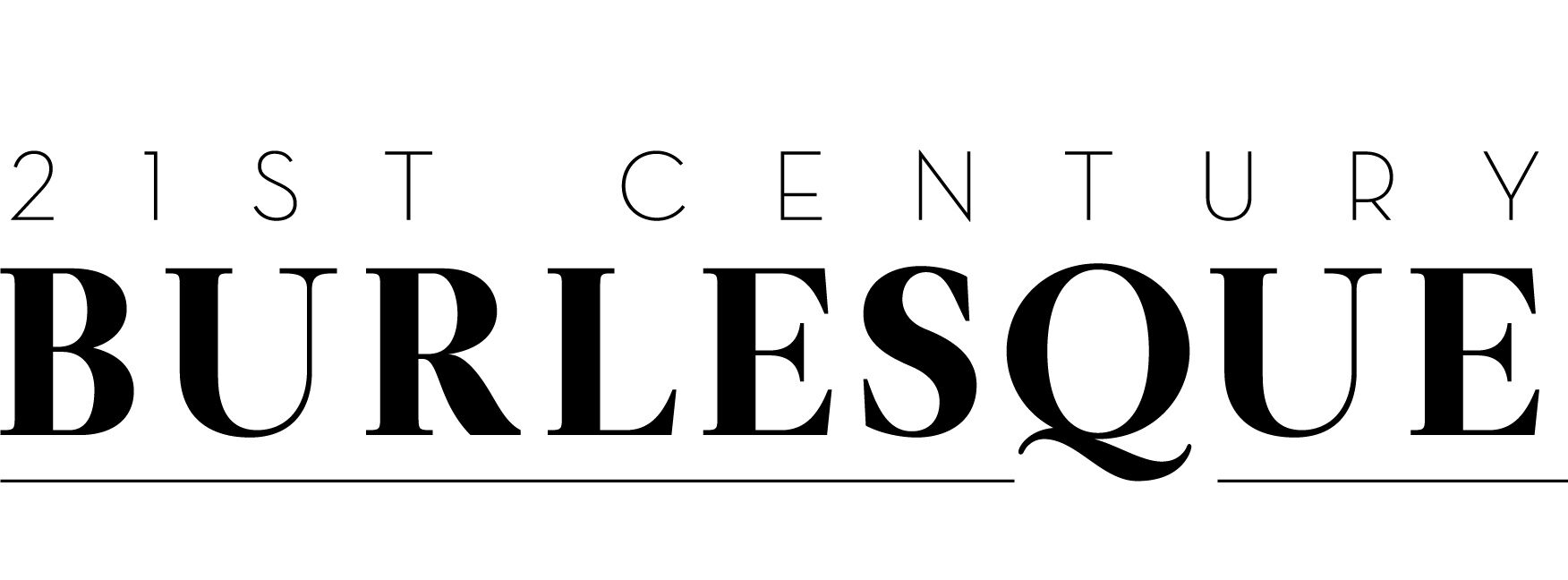Aurora Galore: Glamorous Weirdo is pitched as ‘performance art, avant-garde circus and theatrical annihilation’, but in truth it is none of those things. And it is interesting that Aurora Galore does not describe herself as a burlesque artist – what she is most known for – despite mentioning her rankings in 21st Century Burlesque Magazine’s online poll and her victory at the Burlesque Hall of Fame, both in the show listing and again before she takes the stage.
The show opens with Galore’s strongest number of the night, a burlesque striptease act that sees her strip inventively out of a pink-sequinned, fishtail gown, using the skirt of the dress as fans, before moving into a Charleston sequence and finally into a feather fan dance with her signature style. Although accomplished, it feels overlong, with much of the choreography repeated. Act finished, a breathless Galore takes the mic and a rhinestoned sippy cup and invites us to ‘Talk amongst yourselves about how good I was.’
The show eschews a host and instead, Galore addresses the audience between acts in long, seemingly unscripted monologues that are often repetitive and that, in this segment, veer from her insecurities, to personal details about her health, and her favourite scene from her favourite film, (the plastic bag in the wind scene from American Beauty). Much of Galore’s banter was so reflexive as to be both opaque and a barrier to creating rapport. This is a major flaw in the production; the lack of pace and a clear line in these sections serves to disrupt the pace of show and destroy any momentum the previous act may have generated. They emphasise the lack of cohesion at the centre of the show and create a whole that actually feels less than the sum of its parts.
In a hand balancing number, Jonathan Finch manoeuvers his body expertly around the canes in a pair of rhinestoned nude leggings whilst Galore sings along to a backing track and walks about the stage. Galore introduces Finch’s role in this act as ‘saying something I can’t say’. However, the effect of her singing and movement is to pull focus from the slow, controlled movements of Finch and it becomes difficult to determine what is being said and where one should look.

Act over, Galore introduces a short film she has made, telling us ‘shit’s getting dark and emotional’. Sadly, the film, a montage of shots from Hitchcock’s ‘Psycho’ interspersed with shots of Galore looking mournful, bleeding, and pulling a piece of red cotton through her septum, does not deliver and feels amateurish and trite. It is followed by a contemporary dance number that, Galore tells us, is inspired by a tough time in her life. In a rhinestoned nude leotard, Galore moves across the stage, employing black out and a laser to make shapes. Whilst Galore can certainly move, she struggles to match the music here and the number feels rather flat.
Another stream-of-consciousness monologue introduces an aerial net act from Jonathan Finch and Ben Brown. The act is a perfectly pitched love story, executed with feeling, grace, control and strength. It is the strongest act in the show, with its mix of adept storytelling and finely-honed circus skill.
The finale is a fire act, before which Galore tells us of her nervousness about the show and how she has planned to fall off the stage and die so that those who don’t like the show won’t judge it. It’s a telling remark, and one that points to the issue of building a show around one’s self; if we don’t like her art, then the performer believes we must not like her. This level of reflexiveness is only to the show’s detriment and at times, it falls very much on the wrong side of self-absorption.
The fire act is accomplished and offers spectacle in generous measure with body burning, fire eating, a range of flame transfer tricks, fire fans and fire breathing, but it feels rather business-like, and a stark contrast to the opening number and the energy and personality displayed there.
Fundamentally, the show fails to deliver what it promises. Its take on glamour, femininity and sexuality is one explored by many artists, most recently Miley Cyrus, Lady Gaga and the cast of RuPaul’s Drag Race. Its ‘unique dance styles’ are only unique if one has never seen vogueing, Charleston, or contemporary dance; the ‘mind-altering visuals’ owe their visual language to the work of Warhol, Hitchcock and Bunuel; and the ‘array of other worldly [sic] circus performers’ is actually two.
Aurora Galore’s friends and fans had a great time, many taking to their feet at the end of the show. The rest of us, however, remained bemused, one couple remarking ‘that was weird’ as they left. Perhaps this is the reaction Galore seeks to a show entitled ‘Glamorous Weirdo’, but with the lack of cohesion, some weak acts and little to say, the show felt slow, episodic and insular.
Aurora Galore: Glamorous Weirdo at London Wonderground 2016 reviewed by Glory Pearl.



